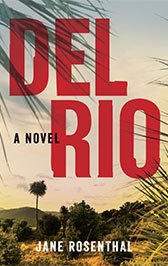California’s Central Valley stretches for more than four hundred miles down the middle of the state, from Bakersfield up to Redding. Known as California’s “heartland,” it is not only the state’s most productive agricultural region, but the most productive in the U.S. and one of the most productive in the world: More than 230 different crops are grown in the Central Valley.
The farming industry in the Central Valley generates billions of dollars every year and is largely dependent on immigrants coming from Mexico. Immigrants have played a significant part in transforming the Central Valley into one of the most important agricultural areas in the world.
The history of immigration
Following decades of continuous immigration from Mexico and, more recently, from Central America, the “Valley” is home to one of the largest Spanish-speaking populations in the country. Valley towns that were only scarcely Latino in the 1950’s are now predominantly Spanish-speaking. Even though Spanish-speaking settlers have made the Valley their home since the early 19th century, their contributions to the settling of the Valley have largely been overlooked until recently.
Praise for the writing
So, it should come as no surprise that the Central Valley has deep roots in the culture of Mexico. A visit to the Central Valley is a must if you love Mexican food, according to Gustavo Arellano, a writer for Eater LA. The Mexican food scene in the Valley is second only to Houston and L.A. Traveling the length and breadth of the Valley, you can find an incredible variety of Mexican food and flavors, from tlayudas at the Oaxaca Restaurant that caters to the the Valley’s large Oaxacan community and Michoacan-styled enchiladas to Mission style burritos, gorditas, and steak a la Chicana.
Sports, arts, and entertainment
For many Latino communities, soccer, or futbol, has been a source of cultural pride and a way in which many Latinos could stay connected to their homeland. Soccer leagues, such as the San Joaquin, Visalia, and the Central California Soccer League, are more like multi-purpose social clubs that have helped Latinos adjust to life in the U.S., have played a major role in introducing other Valley residents to the sport, and are a way to bring communities together.
The origins of the Charreria, or Mexican rodeo, can be traced back to the 16th century when the Spaniards introduced horses to the New World and is one of the most revered sporting events in Mexico. In the Central Valley, charreada is a cultural practice — part rodeo, part fiesta — that brings that flavor of Mexico to the sport of the American rodeo, a big part of the Valley community.
The Central Valley is host to a variety of Spanish language stations and nightclubs specializing in regional Mexican music — cumbia, banda, corridos, reggaeton. Popular music such as Ranchera, Norteno, and Mariachi can be heard up and down the dial on the Valley’s radio stations.
Jane's second novel!

A once-thriving Central Valley farm town, is now filled with run-down Dollar Stores, llanterias, carnicerias, and shabby mini-marts that sell one-way bus tickets straight to Tijuana on the Flecha Amarilla line. It’s a place . . .
Located in downtown Fresno is Arte Americas, the Valley’s largest non-profit Latino cultural center, featuring many Latino art exhibits and a variety of events, including concerts in the summer showcasing Latino music and dance.
Today’s Central Valley
Today, the Latino” population of the Central Valley is over 54%. In addition, it’s also becoming more and more multicultural as more and more people marry “out” of their own ethnic group. So, if the culture of Mexico was not part of your past history, could it be part of your future narrative?
